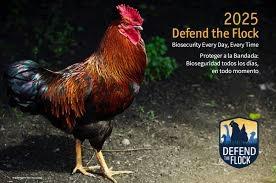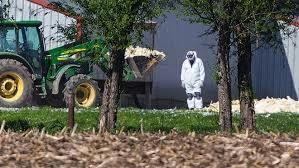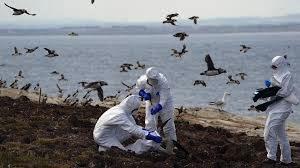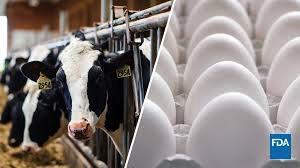 Heavens be praised-relief is at hand! The USDA-APHIS will soon have available 2025 calendars with tips on biosecurity. This is a self-delusional exercise in rearranging deck-chairs on the Titanic.
Heavens be praised-relief is at hand! The USDA-APHIS will soon have available 2025 calendars with tips on biosecurity. This is a self-delusional exercise in rearranging deck-chairs on the Titanic.
For the edification of those deciding on policy we have lost 37 million hens in 2024 in addition to approximately 3 million turkeys and 5 million broilers with their breeders. It is evident that H5N1 HPAI is endemic in the U.S., is disseminated seasonally by millions of migratory birds and is spread over short distances by the aerogenous route. Power ventilated egg-production complexes are therefore highly vulnerable. Not even the most extreme and efficient structural and operational biosecurity will provide absolute protection in high-risk areas.
 The USDA-APHIS has failed stakeholders in the egg and turkey industries who have experienced unprecedented losses and the consumers paying $6 and more per dozen for conventional eggs. We have not received a report from APHIS based on sound epidemiologic studies since backdated 2023 superficial publications on risk factors in turkey and layer flocks relating to the 2022 phase of the ongoing epornitic.
The USDA-APHIS has failed stakeholders in the egg and turkey industries who have experienced unprecedented losses and the consumers paying $6 and more per dozen for conventional eggs. We have not received a report from APHIS based on sound epidemiologic studies since backdated 2023 superficial publications on risk factors in turkey and layer flocks relating to the 2022 phase of the ongoing epornitic.
Segments of he industry need vaccination now! Turkeys, replacement pullets and even mature laying flocks should be protected in high-risk areas. Discussion with APHIS personnel confirms a determination to continue a policy of attempting to eradicate endemic HPAI by “stamping out” infected flocks ad seriatum. Results show this to be a Sisyphean approach. The reluctance to apply limited strategic vaccination is difficult to comprehend. This may be attributed to:-
- An institutional reluctance to admit that past policy and decisions were wrong
- Overt pressure by a segment of the industry to preserve exports at the expense of consumers and producers of eggs, ducks and turkeys
- A prevailing APHIS mindset that vaccination would be more expensive than depopulation. If this is the case then APHIS should make public their scientific and economic studies. We can then all evaluate the logic and assumptions underlying this doubtful justification to withhold vaccination as an adjunct to existing control measures
- And then it may be that some in positions of authority believe that the infection will just bun out as it did in 2015 albeit with a different strain
The 600 lb. gorilla in the corner is the possibility of a series of additional mutations in circulating H5N1 to become more zoonotic and pathogenic or even contagious as feared by virologists and epidemiologists worldwide. This is acknowledged to be a rare possibility but with extreme consequences. The more susceptible two to four million complexes we have and the inevitability of exposure, the greater will be the possibility of a more zoonotic strain emerging, especially with unprotected and susceptible workers involved in depopulation. Adaptation to mammals with contagion was evident in marine mammals along the Pacific littoral and in Antarctica---and then there have been 675 confirmed dairy herds in California.
circulating H5N1 to become more zoonotic and pathogenic or even contagious as feared by virologists and epidemiologists worldwide. This is acknowledged to be a rare possibility but with extreme consequences. The more susceptible two to four million complexes we have and the inevitability of exposure, the greater will be the possibility of a more zoonotic strain emerging, especially with unprotected and susceptible workers involved in depopulation. Adaptation to mammals with contagion was evident in marine mammals along the Pacific littoral and in Antarctica---and then there have been 675 confirmed dairy herds in California.

This is wake-up time, sophistry and posturing have the makings of a slow-motion train wreck. The infection is not controlled. APHIS should accept reality and recognize the zoonotic potential of H5N1 considered by the WHO as the most likely emerging pandemic strain of human influenza.
The industry needs limited, strategic and controlled flock immunization applying commercially available vaccines now. France has shown this approach to be feasible and effective.